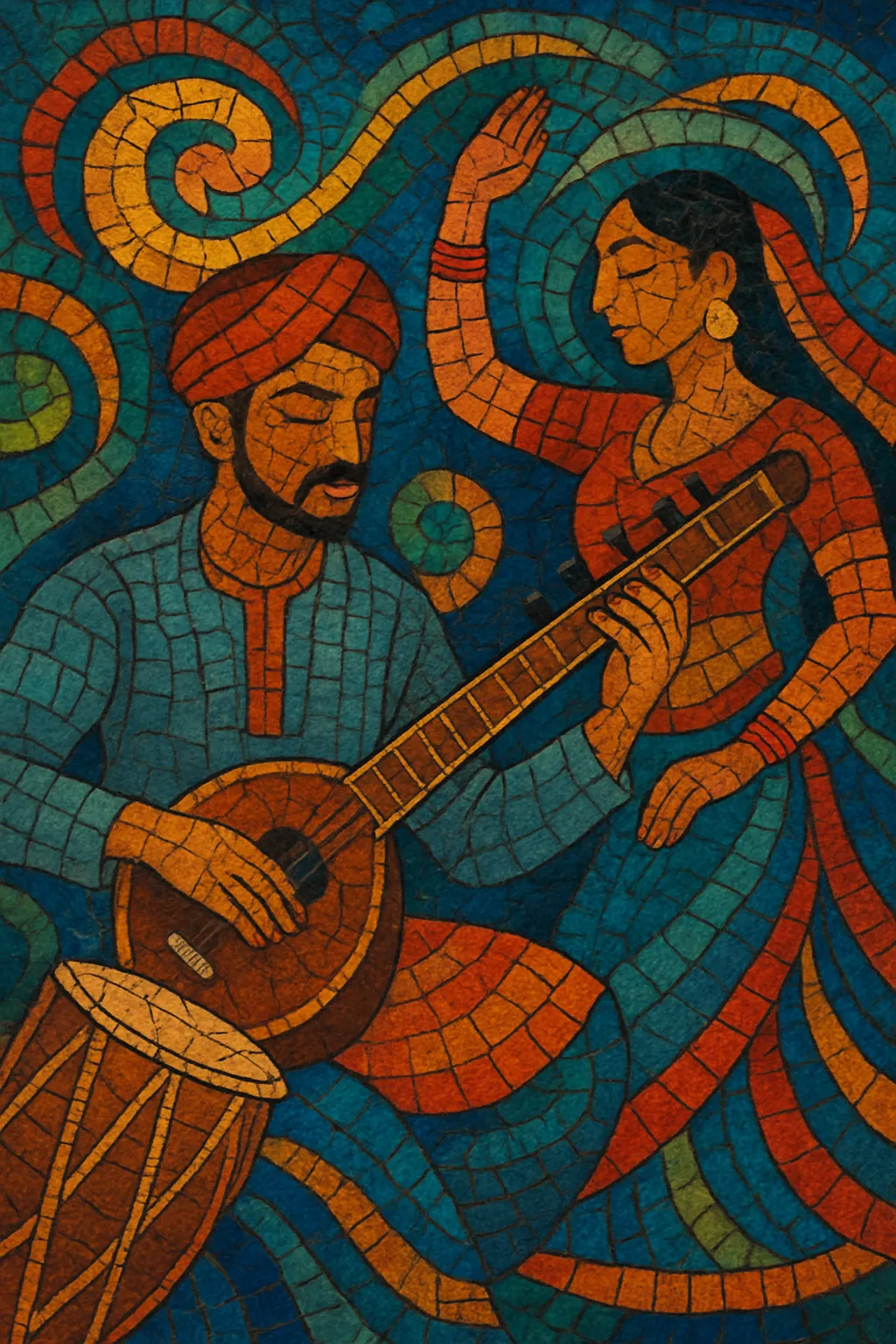Desi is a contemporary umbrella term for South Asian–rooted popular music made both in the subcontinent and across its global diaspora. It blends Hindi, Punjabi, Urdu (and other regional) lyrics with Western pop, hip hop, R&B, and EDM production, while retaining melodic sensibilities from filmi/bollywood and classical/folk traditions.
The sound ranges from romantic, hook-forward ballads to high-energy dance tracks driven by dhol- and tumbi-influenced rhythms. It is less a single formula than a shared aesthetic: flexible code-switching (Hinglish, Punjabi-English), raga-tinged melodies, and club-ready beats that connect Bollywood lineage, Punjabi bhangra, and global urban music.
“Desi” as a musical signifier crystallized in the late 1990s and 2000s within South Asian communities and the UK diaspora. It drew on decades of Bollywood/filmi songwriting, Punjabi bhangra (in both Punjab and its UK reinterpretation), and raga-informed melodies from Hindustani and Carnatic traditions. British-Asian producers and DJs began fusing dhol and tumbi with hip hop, R&B, garage, and later EDM, framing a modern, club-facing South Asian pop.
The early 2000s saw mainstream visibility as tracks like Panjabi MC’s “Mundian To Bach Ke” crossed into global charts, and the Rishi Rich/Jay Sean era brought slick R&B-pop with South Asian identity front and center. Simultaneously, Bollywood embraced contemporary Western production, creating a feedback loop where film songs, Punjabi pop, and diaspora club culture reinforced one another.
Streaming platforms and social media playlists (often titled “Desi” or “Desi Hits”) codified the tag as a broad, accessible category. Artists across India, Pakistan, the UK, Canada, and the U.S. (e.g., Diljit Dosanjh, Badshah, AP Dhillon, Sidhu Moose Wala) popularized trap- and EDM-inflected Punjabi/Hindi pop alongside romantic ballads by major playback singers. The term now functions as a transnational umbrella for South Asian pop hybrids—at once connected to filmi heritage and the global club/hip hop mainstream.


